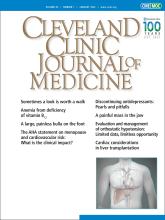
I have always liked looking at blood smears. I am not especially skilled at interpreting them, but I like looking at blood cells under a microscope. And I have had some interesting related experiences. My 7th grade science fair project included the identification of a lectin extracted from a shrub in my front yard that selectively agglutinated type A2 erythrocytes. (Thank you, Harvey, for letting that young boy into your lab in the National Institutes of Health blood bank.) A small piece of personal trivia: “Harvey” is Dr. Harvey J. Alter, the physician scientist who was awarded a Nobel Prize in Physiology or Medicine in 2020 for his work on discovering hepatitis C.
Later, as an undergraduate in Saint Louis, I was repeatedly staring through a microscope counting rabbit neutrophils in chemotactic chambers and synovial fluids from experimentally induced arthritis.
Later still, as a medical intern, it seemed appropriate that I should look at blood smears from patients with unexplained anemia. That is why on my second night on call at the Hospital of the University of Pennsylvania in 1980, looking for the hematology lab, I got lost and locked in a stairwell somewhere behind the pathology department. I was in the stairwell for more than an hour before being rescued by a security guard. Once I found the lab, finding the smear was easy, as blood smears were apparently made at that time for all requested complete blood counts (CBCs) with differential. The stairwell experience was memorable, but so was the patient whose anemia from massive acute hemolysis was attributed to Clostridium bacteremia.
Nowadays, even if a physician orders a blood smear, it may not be reviewed by a pathologist unless the CBC is “flagged” by one of the sophisticated automated blood analyzers. This is surely workflow-efficient and appropriate given the relatively low likelihood of a specific diagnosis coming from most smears. But a low likelihood is not zero and, as demonstrated by Candelario and Klein1 in this issue of the Journal, a diagnosis can occasionally be expeditiously made with a few minutes of eyeball time. In 2005, Bain2 presented a nice discussion on behalf of the simple blood smear, and it is still relevant and worth a read.
Today, residents do not routinely look at blood smears, nor do I. The driving forces of expediency and efficiency are strong. Time spent on activities that have a low yield for influencing care and limited yield in clinical education needs to be limited. Picture a mixture of curiosity and eye-rolling when I take trainees to the microscope. And yet, for some conditions in some patients, going back to the basics can be clinically rewarding, and even memorable.
In the patient presented on page 8 by Candelario and Klein, clues from the history suggested the likely diagnosis, but the constellation of lab findings in their patient (evidence for hemolysis in the setting of pancytopenia and an elevated lactate dehydrogenase) could also suggest diagnoses that might easily have spurred a flurry of imaging and laboratory tests in a 75-year-old patient with “altered mental status” and macrocytic anemia. If this case were presented at a rheumatology clinical conference, in a patient with these lab abnormalities, consideration would be given to the diagnosis of thrombocytopenic microangiopathic syndrome or myelodysplasia with an associated autoimmune hemolytic anemia. But that was not the case, and the simple blood smear revealed the likely diagnosis. And I think that is a pretty cool message.
As we start 2022, our hospitals here are full and our emergency departments overflowing. Our COVID-19 units are straining, filled mainly with previously unvaccinated patients. Elective surgeries are being postponed in order to preserve bed space. Some days it is impossible to admit even a very ill patient directly to the hospital from my clinic. We are weighing even more carefully than usual the need to immediately initiate immunosuppressive therapies in patients with diseases that threaten organs or quality of life, balancing concern over disease progression vs concern over poor outcome from COVID natural infection or blunting the efficacy of a pending vaccine 3rd dose or booster. Fortunately, it seems that most of our medications are not adversely affecting the outcome from COVID infection.
Yet we are not sanguine about this. There is concern over what the omicron variant, influenza, and continued social resistance to vaccination and masking will bring. A few visible members of our medical community continue to put forth profound misinformation without receiving professional or social sanctions. This is not attributable to academic difference of opinion or open discourse any more than yelling “fire” in a crowded building is free speech. It is rare but ongoing, while our ICUs are packed and frontline physicians, nurses, and other healthcare workers are suffering enormous physical and emotional stress caring for patients whose severe disease may well have been preventable.
Still, there is hope from knowing that antivirals with efficacy in preventing severe disease are coming out of clinical studies, and the vaccination rates are still rising, even if slowly. And there is comfort in seeing the genuine kindness and compassion offered by medical caregivers to patients who would otherwise be isolated and alone.
On behalf of all my editorial colleagues, I wish you—our readers and fellow passengers on this strange roller coaster of life—a safe, healthy, and peaceful 2022.
- Copyright © 2022 The Cleveland Clinic Foundation. All Rights Reserved.






